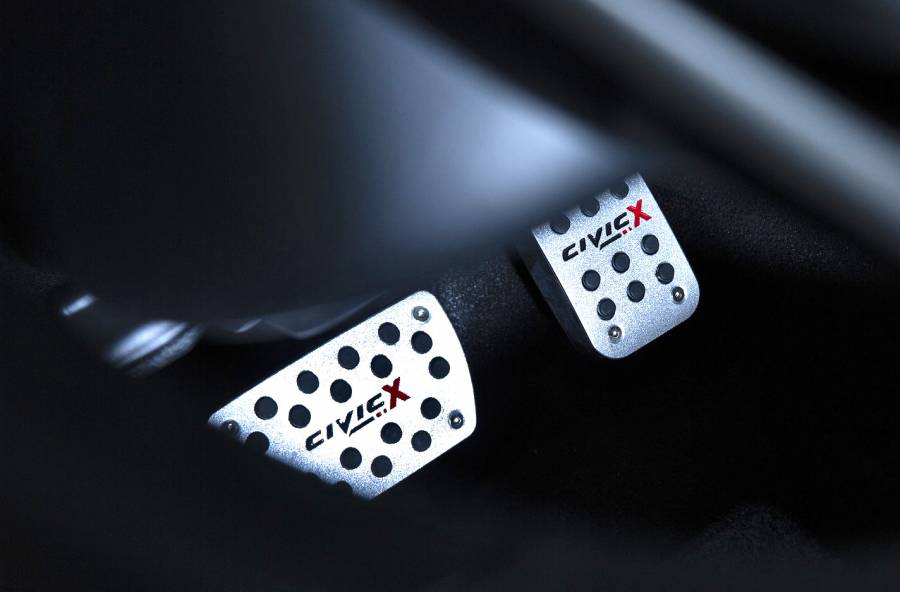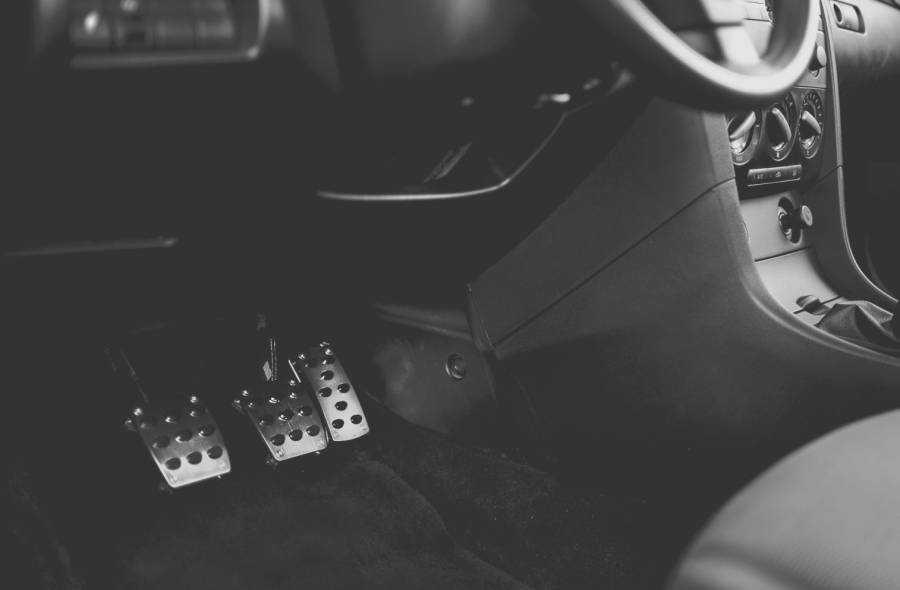Quick Navigation
The brake pedal is there not only to stop your car but also to enable it to start due to the hydraulic fluid flow from or to the brake lines.
But sometimes, it gets stiff when your car is off, thus making it impossible to start it.
It can be really distressing since your car will be dead, and you will have to tow it to a mechanic shop when you don’t have the skills or the tools to fix it.

So what makes the brake pedal go stiff and make the car not start? How can you fix the causes of this issue? Let’s have a look.
Faulty Ignition Switch
Starting the car begins with turning on the ignition switch. Once you do so, you will release the brake pedal.
If the ignition switch gets faulty, you won’t be in a position to do so. It can get faulty when the nuts that hold it in its socket get loose.
It can also become useless when the key bents inside. If your car experiences this issue, the only way to fix it is by removing the entire assembly and replacing the damaged parts.
The process may need some skills you don’t have; therefore, you might have to call a professional to help you.
Thankfully, once you fix the issue, the brake pedal will stop being stiff, enabling you to release it and start the car.
The Brake Booster Is Not Working Properly
Your car’s braking system has a brake booster that magnifies the force you apply on the brake pedal. But this component works when there is enough engine vacuum.
When the car is off, this vacuum becomes small, and the brake pedal will be stiff. Therefore, to release the brake pedal, you will have to apply effort to remove the braking power.
Luckily, the engine vacuum is restored once the car starts, and the brake booster usually starts working.
However, the most effective way to sort this problem is to avoid pressing the brake pedal when the car is off.
The car’s manual sometimes specifies the number of times you are not supposed to exceed when the vehicle is off and you press the pedal.
Low Hydraulic Fluid Level
The hydraulic brake fluid transfers the effort applied to the brake pedal to the brake lines.
Therefore, it amplifies or lowers the braking force depending on operating the brake pedal.
If this fluid runs low, the brake pedal will become stiff, and you will need to use extra effort when pressing it.
But what causes this fluid to drop? Many factors cause this problem. For instance, the brake lines could tear, thus allowing the fluid to leak.
Therefore, it will save you some time and money if you check the hydraulic fluid level every time the brake pedal gets stiff and the car won’t start.
If you find that the brake lines have worn out, you should replace them to prevent the fluid from leaking.
Circuit Problems
Circuit problems also make the brake pedal stiff, and the car will not start.
For example, if the battery is faulty, the voltage supplied to the engine won’t be enough to power it and expand the engine vacuum.
Also, if the starter cable disconnects from the battery, the car won’t ignite.
To diagnose this issue, you can check the voltage that reaches the starter motor. You can do so by switching on the ignition key and observing it.
If the voltage is low, then your car has a circuit problem that makes its brake pedal gets stiff.
You can also diagnose circuit issues by listening to the car’s sound when you start it. If the vehicle makes a clicking noise, your car’s starter motor has a problem.
Fixing the circuit problems is not easy since you have to test and repair all components.
But it would be best if you did not let the situation pass since by repairing the parts that have gone faulty, you will be preventing further damages to the circuit and the car.

Moved Pressure Differential Valve
Your car has a pressure differential valve on its master cylinder that alerts you when there is an imbalance in pressure.
But it can also be annoying since it can inhibit the hydraulic fluid flow. It tends to move when the pressure drops on either side of the cylinder.
When it moves, the hydraulic fluid released from the master cylinder will hit a wall, and the brake pedal will become stiff.
You can check what makes it move and correct it appropriately to resolve this issue.
Additionally, you can re-center the valve by balancing pressure on the two sides of the valve. It will make the fluid flow freely to the brake lines.
Faulty Caliper
The caliper in the braking system controls how the pads behave by releasing or dragging them.
When the caliper releases the pads, the car slows down, and when it pulls the pads, the car moves. For the caliper to work well, it needs to move smoothly.
But, like any other component in the car, the caliper can also get faulty. For example, its screws can disengage from their sockets, thus making the caliper get stuck.
A stuck caliper won’t control the pads; hence you will feel that the brake pedal is stiff.
The best thing is that you can quickly diagnose a problem with the caliper by listening to the sound it produces.
If you hear a drag-like sound, the caliper is not working correctly. You can then go ahead and fix the caliper or replace its components that have worn.
Worn Brake Pads
The brake pads make the car stop or move when operating the brake pedal. They work by creating friction between their surface and the wheels.
But this friction can be harmful since, other than facilitating stoppage of the wheels, it makes the brake pads wear out.
When they are worn, they won’t break from the wheels efficiently. It will make the brake pedal feel stiff, making it hard to start the car.
To solve the issue, you need to replace the worn brake pads. It will require you to remove the wheels, maneuver to the brake pads location and remove the nuts that hold them.
Although it is a challenging task, it is nothing compared to how it feels when the brake pedal is stiff and the car can’t start.
To Wind-Up
Using a car with a stiff brake pedal and an engine that can’t start can ruin a pleasant day. Therefore, knowing how to fix it can save the situation.
Many things can be attributed to this problem. To mention a few, faulty ignition switch, malfunctioned brake booster, circuit problems, low hydraulic fluid, etc., can be blamed for this annoying outcome.
However, encountering them doesn’t mean that it is the end of your car. You can solve them by using the right tools and skills.
But if you don’t know how to go about it, you can tow your car to a professional who will fix it in no time.

Patrick started his love affair with cars in his childhood. Over the years, he claims a sturdy hold on his driving skills, along with a thorough understanding of cars. We can expect some interesting, holistic, and pleasurable blogs with his flair for writing and his love for cars.
Being a car enthusiast, Patrick has experience comprising of two decades in which he has ridden some of the meanest and strongest machines in the automotive industry. His previous avatars include an automotive professional, photographer, and journalist, and you will certainly experience the roundness of experience in his piece on this site.
In his second decade of reviewing cars and analyzing tools, Patrick is all set to give you convincing, reliable, and the latest information regarding what’s happening in the automotive industry. Currently, he owns a BMW Z3 but cannot get his eyes off Aston Martin DB5. He is a car enthusiast; he loves cooking and listening to music, especially jazz. Here are some of the pieces written by our ace author.






